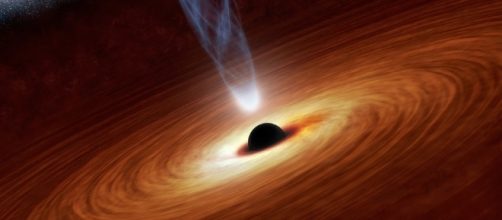Space scientists spot a star in closest orbit ever around a black hole. Professor James Miller-Jones at the Curtin University says that the star is losing gas to the black hole for millions of years. He claims that this star has lost its mass, and spins around the black hole thrice a day. For the first time, astronomers see the closest orbital spin where a star is present. Experts claim that there are numerous stars around the black hole, and they will use the Chandra X-ray Observatory to spot them.
Location of the star
Professor James Miller-Jones says that the star is 14,700 light years away from our Earth, and frequently changes its position.
Previously, it was spotted in the binary system of a cluster of stars in the Milky Way. Observations reveal that the star constantly changes its position, and has lost its density. Every 30 minutes, it changes its location and brightness, which is likely the length of time it takes to complete one circle. Mr. James says that currently the star is located close to another bright star, orbiting the black hole at just 2.6 times the separation between our Earth and the Moon. It has lost its mass and does not shine with its full brightness. Experts believe that the star will change its position in next few days. James says that this is the first star that has been discovered close to the black hole.
Age of the star
Dr. Arash Bahramian at the University of Alberta says that he will collaborate with Professor James to find out the characteristics of the newly-discovered star. He says that it is close to the black hole, and will get wider with time. Researchers believe that the star will turn into an exotic object. It was formed when the black hole smashed into a red giant star, and gas from its outer region ejected a White Dwarf.
Dr. Arash believes that the whole process took millions of years, so it is impossible to tell anything about the exact age and history of this star. However, experts will continue their research, and say that dozens of stars possibly exist around the black hole.

